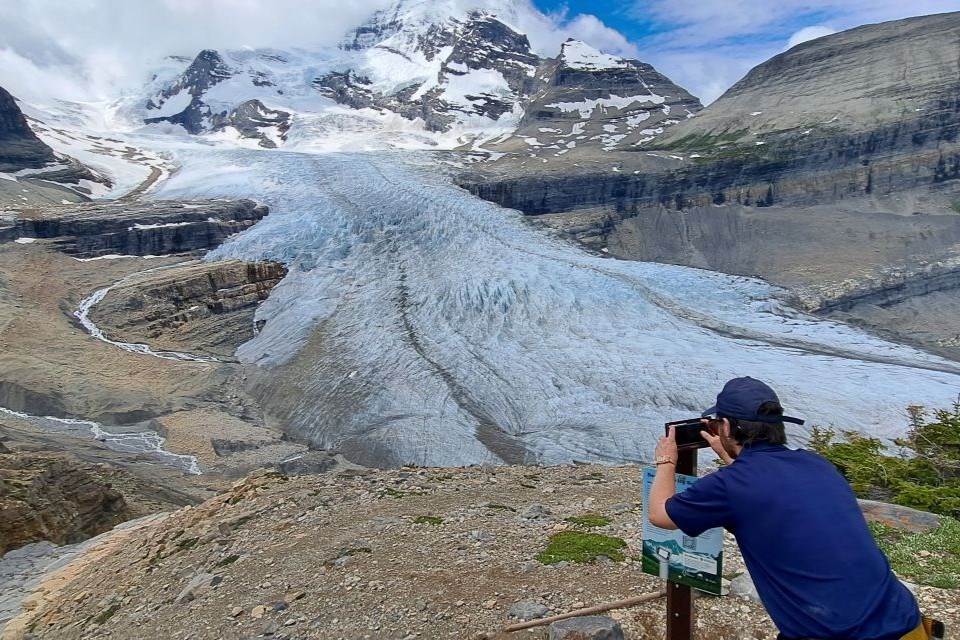JASPER – Visitors can help scientists monitor glacier change over time by taking and submitting photos of glaciers that will be analyzed by researchers at the University of Waterloo.
The Icy Initiative launched in Jasper and Glacier national parks as well as Bugaboo, Garibaldi and Mount Robson provincial parks on Aug. 7.
“In this UN International Year of Glaciers’ Preservation, our government and Parks Canada are proud to invite Canadians to connect with the beauty and power of the iconic glaciers we are so fortunate to have in Canada,” said Canadian Identity and Culture Minister Steven Guilbeault in a news release.
“Through the Icy Initiative, visitors become part of the story — helping us understand and protect these precious natural wonders in the face of climate change,” Guilbeault added.
Cell phone stands have been installed at select glacier viewpoints, including Athabasca Glacier in Jasper National Park, with more to come. As of Wednesday (Aug. 13), six stations have been established in the five parks.
Visitors can participate by placing their phone in the provided holder, capturing a photo of the glacier and submitting it via the QR code on-site or through the GeoReach website. Instructions are available at each site.
Chris Houser, dean of science at the University of Waterloo and a professor in the department of earth and environmental science, explained how this program builds on the success of the Coastie Initiative, where visitors submitted photos of coastal systems in Atlantic Canada.
“Based upon the success of that program, Parks Canada and BC Parks wanted us to continue that work of looking at glaciers,” Houser said.
Submitted photos will be analyzed by University of Waterloo researchers to track glacial changes such as retreat, thinning and disappearance.
Although researchers could have gotten these images through stationary cameras or satellites, Houser said how this allowed the public to be part of the process and get educated about glaciers.
“Behind those scenes, we are going to be building in more and more educational materials that will allow us to provide that information back to those who are participating in it,” he added. “So, it’s helping to drive a broader educational program as to how the landscapes of Canada are changing.”
Houser noted that the camera stands ensured all the photographs were identical in frame, and all photos would be used for data collection only and available to any research group looking at how glaciers are changing.
“I appreciate anybody who has been taking the photograph at these stands,” he said. “It really does help in terms of data collection.”
Kim Weir, visitor experience product development officer for Parks Canada, said Jasper National Park had a stand at Toe of the Glacier Trail overlooking the Athabasca Glacier. It will also have one at the Path of the Glacier Trail for the Cavell and Angel glaciers once Cavell Road reopens.
“The Icy Initiative really allows the University of Waterloo to gather valuable data, but at the same time, it really gives visitors kind of a hands-on role in documenting potential environmental change or glacier change,” Weir said.
The cell phone stands are being supplied by the University of Waterloo, while the parks are responsible for installing them in strategic locations that are readily accessible for visitors.
Weir described how the Icy Initiative allowed visitors to take their glacier-viewing experience “beyond the selfie.”
“Personally, I think it’s a really powerful way for visitors to Jasper National Park, and the other parks where Icy stands have been installed, to possibly even gain a deeper appreciation for these protected areas and for the natural forces that are shaping them,” she said.
The Icy Initiative is anticipated to last until at least August 2027, although the program has the potential to go on indefinitely.




